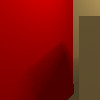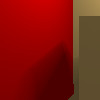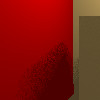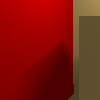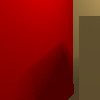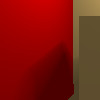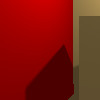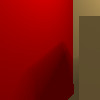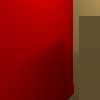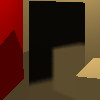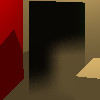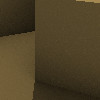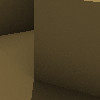comp870 - Assignment 2
Overview
In this assignment, I implemented area light sources for soft shadows, glossy reflections, and ambient occlusion. All of these methods stochastically sample a large area. Unless otherwise mentioned, no super-sampling was used when rendering these images. Also, unless mentioned, all of these effects adaptively stop sampling as the result converges to a value.
The code and data for the project is available here.
Soft Shadows
Soft shadows are shadows that have a large penumbra. This is caused by light sources that have finite area. In the penumbra, only a fraction of the light surfrace may be visible, thus only some percentage of the light energy reaches the area in the penumbra.
By stochastically sampling the surface area of the light, the percent of visibility can be calculated. For this assignment, I implemented disc-shaped area lights. When calculating the shadow at some intersection point, I generate random points on the disc surface. For each point on the light, an occlusion test is performed. If the light is unoccluded, it contributes some energy to the intersection point.
Adaptivity Variance
Every few sampling cycles, the change in the shadow value is compared against an epsilon. If the difference between the old shadow value and the new shadow value is less than epsilon, the shadow is deemed to have converged to an answer and sampling is stopped. Smaller epsilons give more accuracy, but require more compute time. Pseudocode for the method is presented below.
for 0::num_samples
new_sample = get_sample()
sample_accum += new_sample
if(time_to_check)
if(sample_accum - old_accum < epsilon)
return sample_accum
else
old_accum = sample_accum
end
end
end
radius: 50
max samples: 500
check every: 50
epsilon: varies
The total number of samples can be varied to adjust between accuracy and performance. For these test, no adaptivity was used. Clearly, increasing the number of samples improves the resulting shadow, but greatly increases the rendering time.
Settings:
radius: 50
max samples: 500
check every: N/A
epsilon: N/A
Since the area of the light is sampled, the adjusting the size of the light source results in different types of shadows. As light sources become smaller, the penumbra becomes smaller and the shadow edges become harder.
radius: varies
max samples: 500
check every: 50
epsilon: 0.001
Glossy Reflections
Glossy reflections are reflections that do not reflect like mirrors, but rather reflect a blurred image. Samples are perturbed in a cone about the perfect reflection vector. As the cone radius spreads out, the resulting image is blurrier. As the spread becomes larger, more samples are needed to overcome noise.
spread: varies
max samples: 500
check every: 50
epsilon: 0.001
Ambient Occlusion
Ambient occlusion is a non-physically based effect that approximates a global illumination look. It attempts to estimate how occluded a point is by sampling the hemisphere about the point. If many objects are found, it is likely that they would block the ambient light in the scene, thus reducing the light energy at the point.
max samples: 500
check every: varies
epsilon: 0.001
Other
Adaptive Stochastic Sampling

Cost to adaptively calculate the soft shadows.
Darker areas needed less samples, lighter areas needed more. As shown in the image, points in regions where the light is either entirely visible or occluded require the fewest samples. This is intuitive, as the shadow amount converges with few samples to the desired result. Shadow penumbra require the highest number of shadow rays, as occasional occlusions cause the result to converge slower.
Occlusion Caching

Simple occlusion caching by recording occluding objects.
| color | meaning | single ray | full test |
| red | cache was empty | x | green | cache hit | x | yellow | cache miss | x | x | blue | cache updated | ? | x |
with cache: 41.31s, 215.3 million intersections
no cache: 55.56s, 295.4 million intersections
All effects

All effects rendered together.
This image shows soft shadows, glossy reflections, and ambient occlusion. Even with medium-quality settings, this image required ~40 minutes to render.
Conclusions
While expensive, these effects add much more realism to the scenes. They help to soften the hard edges often found in raytraced scenes, replacing them with more acceptable noise. While the expense of the sampling could be mitigated by using acceleration structures, there still remains a high cost per pixel due to the number of samples needed to reduce noise (especially ambient occlusion).
